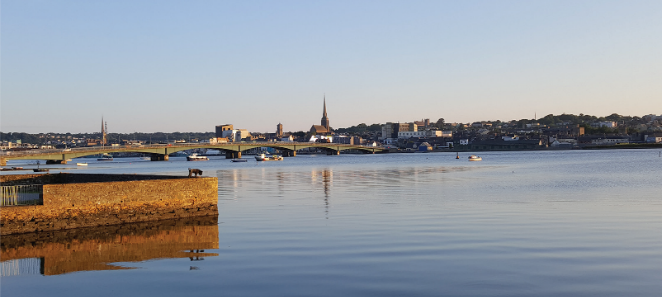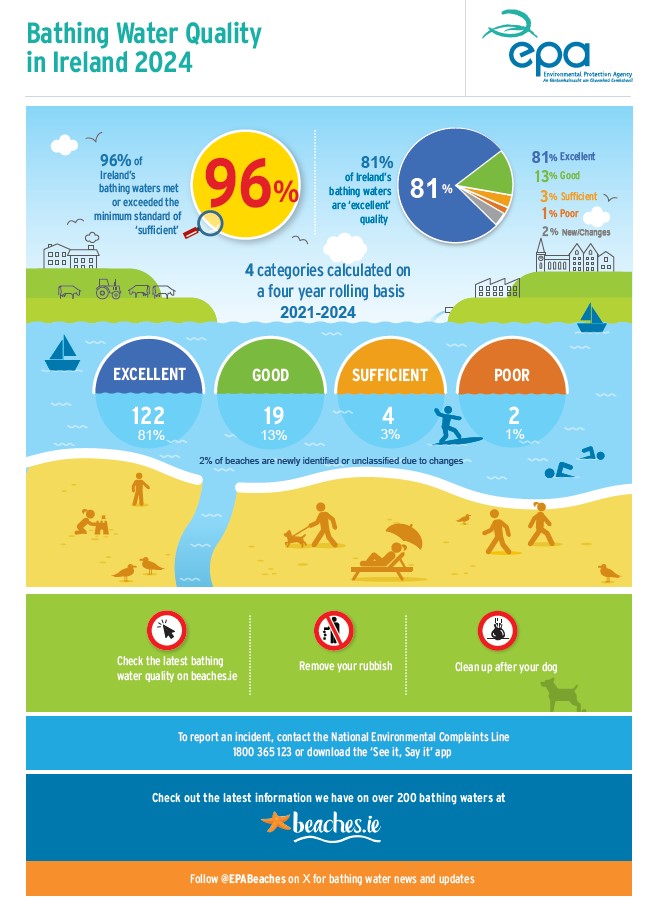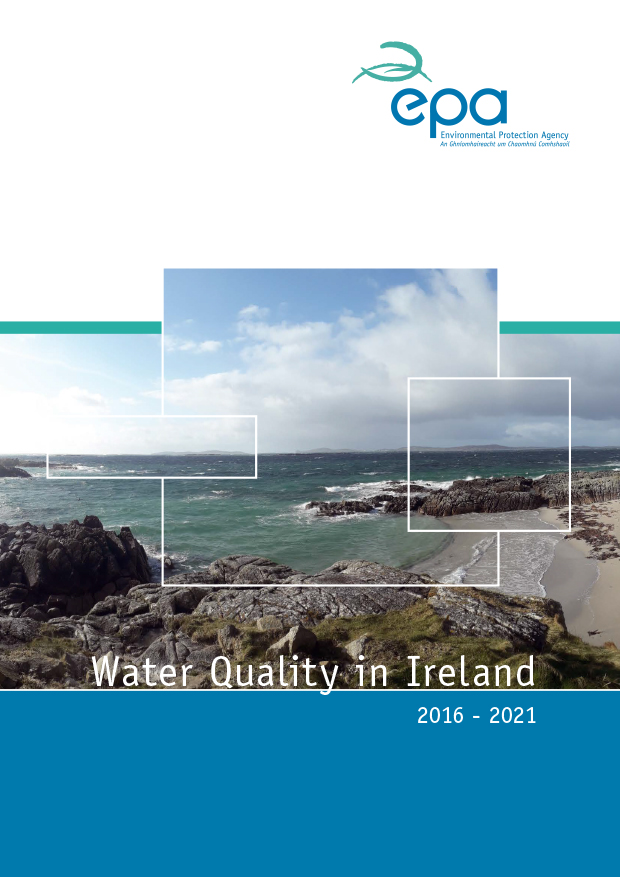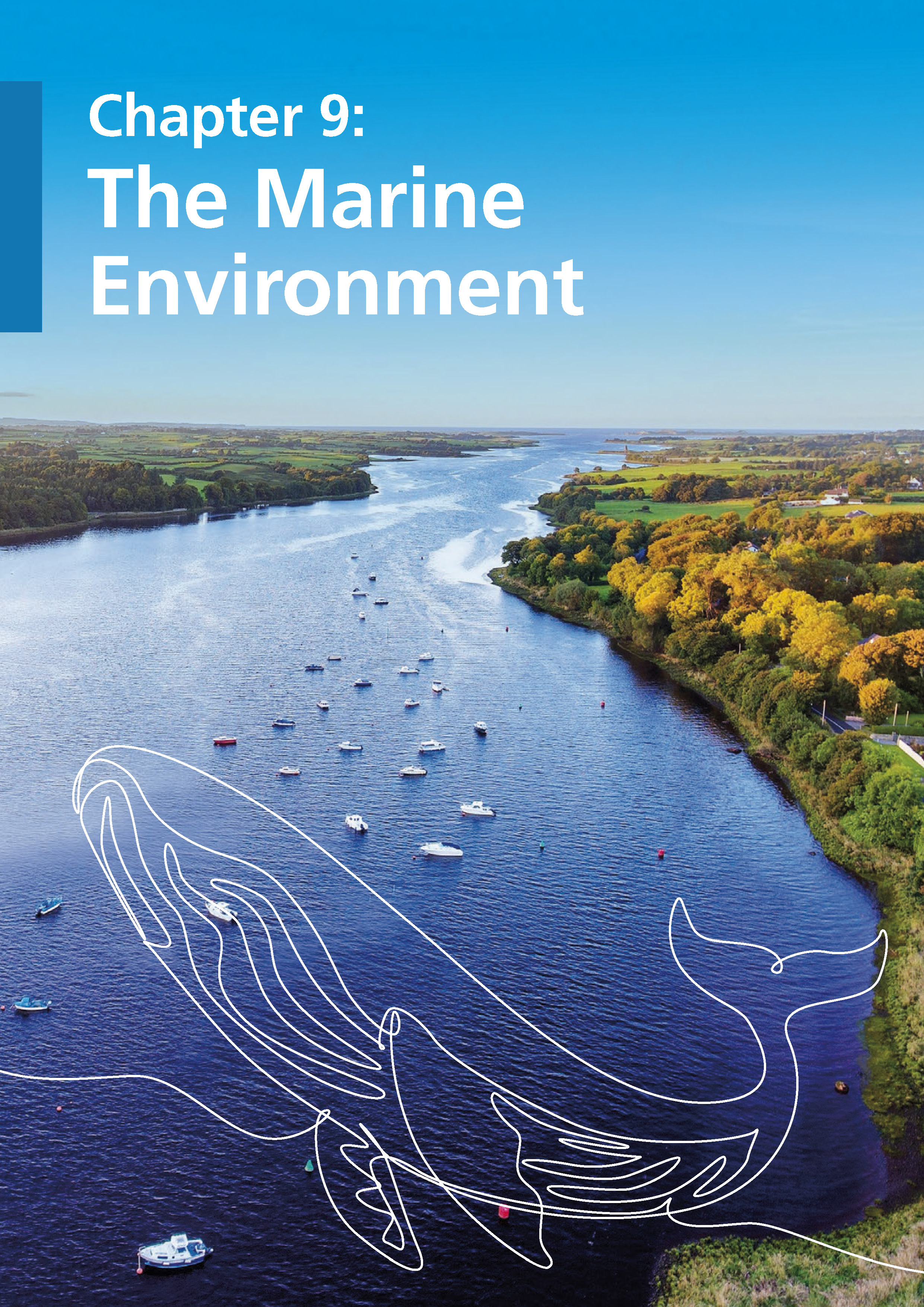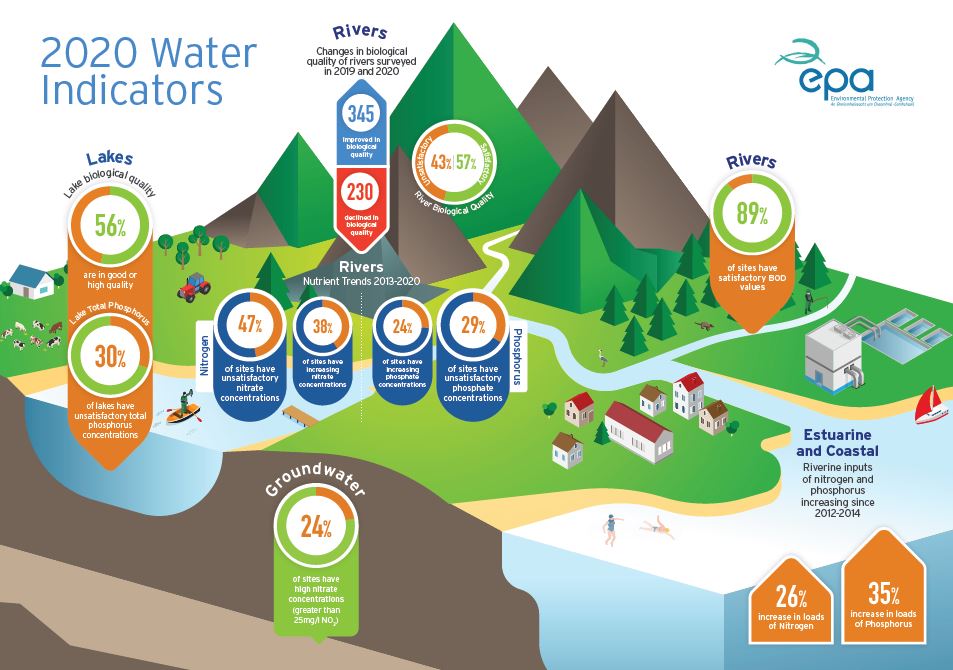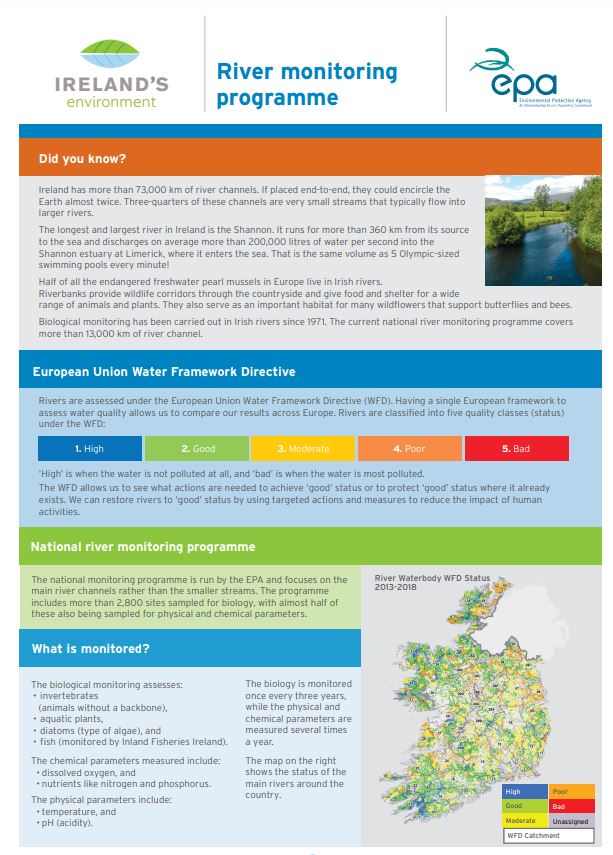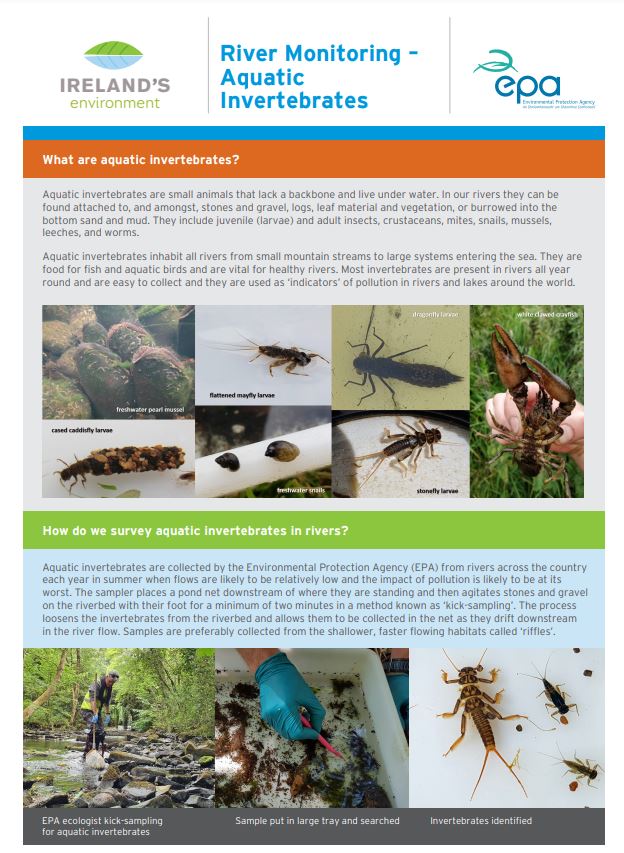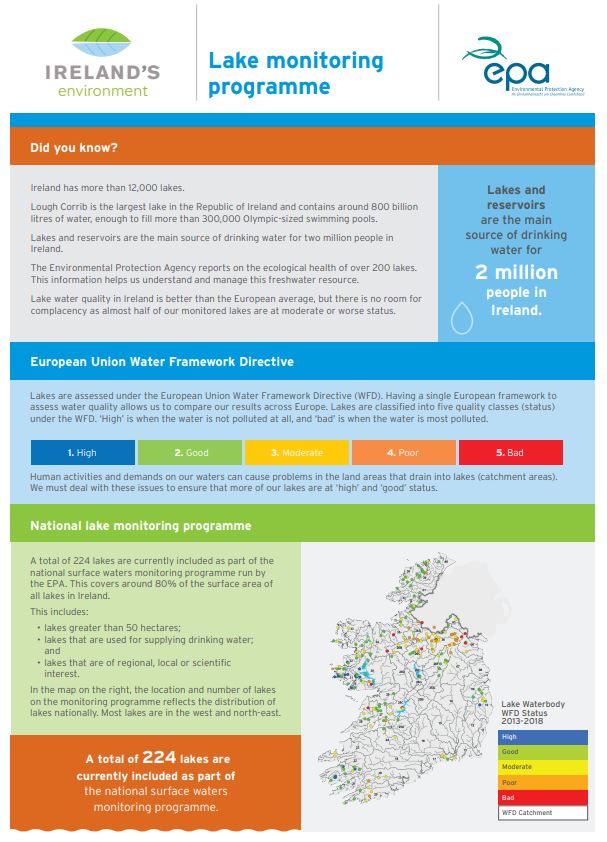Fresh, clean water is vital for all life on earth. Ireland has some of the best water quality and cleanest beaches in Europe. Ireland’s climate means that there is usually enough water to meet the needs of its people and the surrounding environment.
However, overall our water quality in Ireland is getting worse.
Just over half of Ireland’s surface waters are in good condition. There is a relatively small decline in water quality of our rivers and lakes. The number of estuaries and coastal water bodies in satisfactory condition has also decreased.
The main threat to water quality is the presence of too much nutrients, such as phosphorus and nitrogen, which come primarily from agriculture and waste water.
Read more about the EPA’s assessments of water quality and agriculture.
When nutrients such as nitrogen and phosphorus enter our waterways they cause an increase in the growth of plants and algae. This in turn clogs up our water courses, uses up oxygen and harms other aquatic life such as insects and fish.
Nitrates and phosphorous
Nationally, there have been year on year fluctuations, with most recent nutrient concentrations reducing in rivers in most regions. However nitrate concentrations remain too high in rivers, groundwater, and estuaries in the southeastern half of the country. Almost a quarter of all rivers have phosphorus concentrations which are greater than the good water quality standard.
Nutrient losses from agriculture are one of the significant drivers impacting on our water quality. Read further information on the results of water quality monitoring in 2024, as used to support the assessment of the impact of the nitrate’s derogation on Irish waters.
Find previous water quality assessments of the impact of the nitrate’s derogation on Irish waters for 2023, 2022 and 2021.
Read the most recent Article 10 report on implementation of the Nitrates Directive in Ireland. You can also read historic reports 2016-2019 and 2012-2015.
The evidence shows that the goal of restoring all waters to good status by 2027 will not be achieved. Full implementation of Ireland’s River Basin Management Plan, including targeted action at the local water catchment level, is key to improving water quality.
